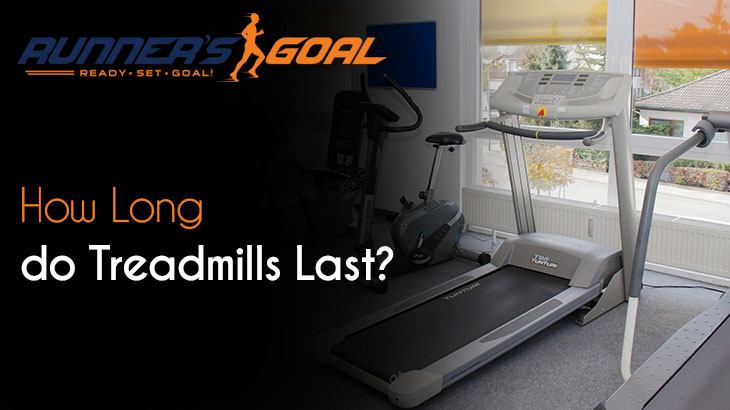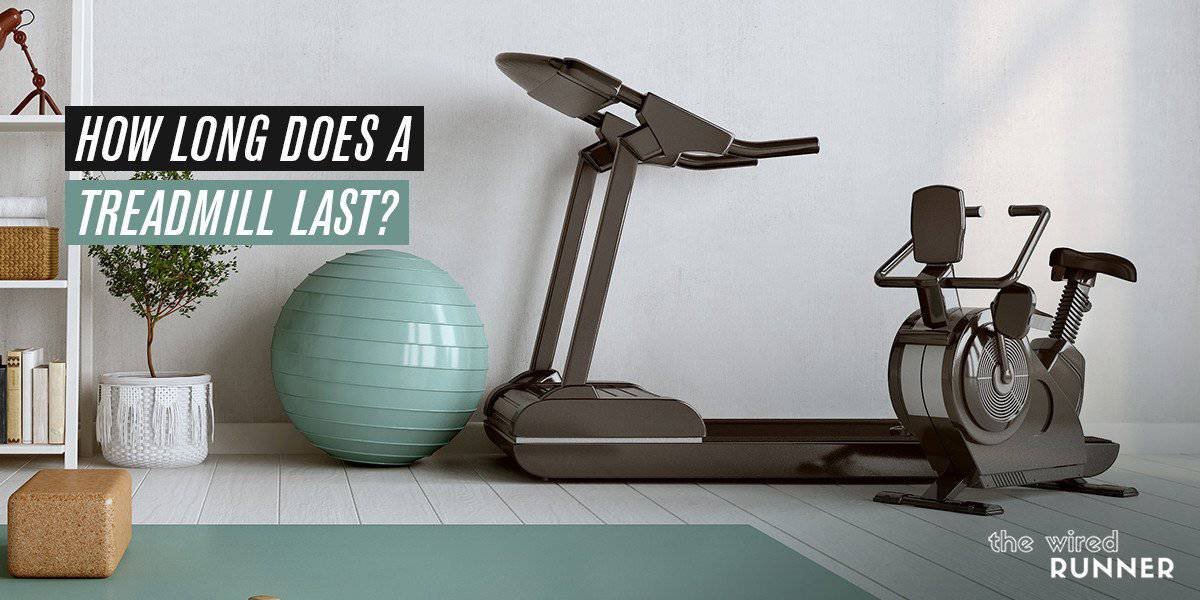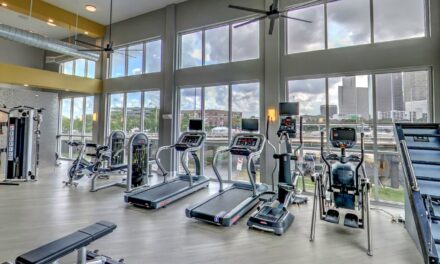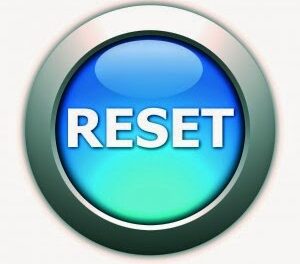If you’ve ever wondered how long a treadmill can endure the test of time, you’re not alone. As fitness enthusiasts, we all invest in workout equipment with the hope that it will stay by our side for years to come. At Fit Gear Gurus, we understand the importance of durability and longevity, which is why we’ve explored the question: “How long does a treadmill last?” In this article, we’ll discuss the factors that influence a treadmill’s lifespan and provide you with insights to help you make an informed decision when purchasing your next fitness machine. So, lace up your shoes, and let’s dive into the world of treadmill longevity!

This image is property of www.runnersgoal.com.
Factors affecting the lifespan of a treadmill
When it comes to the lifespan of a treadmill, there are several factors that can have an impact. By understanding these factors, you can make informed decisions about maintenance and usage to help prolong the life of your treadmill.
Usage frequency
One of the most important factors that can affect the lifespan of a treadmill is how frequently it is used. The more often a treadmill is used, the more wear and tear it will experience. If you are someone who uses a treadmill daily for intense workouts, you can expect the lifespan to be shorter compared to someone who uses it occasionally for light exercise.
Maintenance and upkeep
Proper maintenance and upkeep of a treadmill are essential for ensuring its longevity. Regular cleaning and lubrication of the belt and deck, checking and tightening bolts and screws, and inspecting the motor are all tasks that should be performed regularly to keep your treadmill in good working condition.
Quality of the treadmill
The quality of the treadmill itself is another factor that can affect its lifespan. Higher-quality treadmills are often built with more durable materials and components, which can contribute to a longer lifespan. While these may come at a higher price point, investing in a high-quality treadmill can be worth it in the long run.
Important components of a treadmill
To understand the lifespan of a treadmill, it’s important to know about its different components and how they contribute to its overall durability.
Motor
The motor of a treadmill is its powerhouse, responsible for driving the belt and providing the necessary power for your workouts. A high-quality motor is key to a long-lasting treadmill. Look for treadmills with motors that have a higher horsepower rating, as these tend to be more durable and can withstand frequent and intense use.
Belt
The belt is what you walk, jog, or run on while using the treadmill. It’s important for the belt to be made of durable materials that can withstand constant use and friction. A thicker and wider belt is generally more durable and less prone to wear and tear. Additionally, regular lubrication of the belt can help reduce friction and extend its lifespan.
Frame
The frame of a treadmill provides stability and support for the motor, belt, and console. A sturdy and well-built frame is crucial for the longevity of a treadmill. Look for treadmills with frames made of strong materials such as steel or aluminum, as these are more likely to withstand heavy usage over time.
Electronics and console
The electronics and console of a treadmill control various features such as speed, incline, and workout programs. These components should be well-built and responsive to ensure a smooth and enjoyable user experience. Look for treadmills with consoles that are user-friendly and have a reputation for reliability.
Incline system
Some treadmills offer an incline feature that allows you to simulate uphill running or walking. The incline system should be sturdy and smooth, as it undergoes additional stress compared to treadmills without this feature. A high-quality incline system is less likely to experience issues or breakdowns, thus contributing to the overall lifespan of the treadmill.

This image is property of cdn.fitnessexpostores.com.
Average lifespan of a treadmill
The lifespan of a treadmill can vary depending on its usage and quality. There are two main categories to consider: residential treadmills and commercial treadmills.
Residential treadmills
On average, a well-maintained residential treadmill can last anywhere from 7 to 12 years. This estimate assumes regular usage for individual or family workouts. With proper maintenance, such as regular cleaning, lubrication, and belt adjustments, you can maximize the lifespan of a residential treadmill and potentially extend it beyond the average range.
Commercial treadmills
Commercial treadmills, which are designed for heavy usage in gyms or fitness centers, are built to be more durable and withstand intense workouts. These treadmills often have a longer lifespan compared to residential models. A well-maintained commercial treadmill can last anywhere from 10 to 15 years or more, depending on the brand, usage, and maintenance practices.
Signs that a treadmill needs replacement or repair
Even with proper maintenance, treadmills can experience issues that may require repair or replacement. Here are some common signs that indicate your treadmill may be nearing the end of its lifespan or needs professional attention:
Excessive noise
If your treadmill is making loud or unusual noises while in use, it could be a sign of mechanical problems. These could include worn-out bearings, loose components, or issues with the motor. If the noise persists even after cleaning and lubricating the treadmill, it may be time to consult a professional for repair or consider replacing it.
Unresponsive buttons or controls
If the buttons or controls on your treadmill become unresponsive or erratic, it can make it difficult or unsafe to use. This could be a sign of electrical or circuitry issues. Try troubleshooting by disconnecting and reconnecting the power source, but if the problem persists, professional assistance may be needed.
Frequent breakdowns
If your treadmill is constantly experiencing breakdowns or requires frequent repairs, it may be a sign that it is reaching the end of its lifespan. While occasional repairs are normal, if they become a regular occurrence, it may be more cost-effective in the long run to replace the treadmill.
Uneven belt movement
If you notice that the belt on your treadmill is slipping, sliding, or moving unevenly while in use, it could be a sign of belt tension issues or a worn-out belt. Attempt to adjust the belt tension following the manufacturer’s guidelines, but if the problem persists, it may be necessary to replace the belt or seek professional assistance.

This image is property of treadmillexplorer.com.
Proper maintenance to extend treadmill lifespan
Regular maintenance is crucial for extending the lifespan of your treadmill. Here are some important maintenance tasks to incorporate into your treadmill care routine:
Regular cleaning and lubrication
Regularly clean the surfaces of your treadmill, including the belt, deck, and console, to remove dust, dirt, and sweat buildup. Use a soft cloth or mild cleaning solution to wipe down the surfaces. Additionally, lubricate the belt and deck according to the manufacturer’s recommendations to reduce friction and wear.
Check and tighten bolts and screws
Over time, the vibrations and movements of a treadmill can cause bolts and screws to become loose. Regularly check all the screws and bolts on your treadmill’s frame and console and tighten them as necessary. This will help maintain stability and prevent any unnecessary wear and tear.
Monitor and adjust belt tension
Proper belt tension is important for the smooth functioning of your treadmill. Monitor the tension of the belt regularly and make adjustments as needed. Follow the manufacturer’s guidelines for proper belt tension, as over-tightening or under-tightening can lead to additional strain on the motor and other components.
Inspect and clean motor
The motor is the heart of your treadmill, so it’s important to keep it in good condition. Regularly inspect the motor for any signs of dust or debris buildup and clean it accordingly. Use a soft brush or compressed air to remove any accumulated dirt. Taking care of the motor will help ensure its longevity and prevent overheating.
Keep the treadmill in a suitable environment
The environment in which your treadmill is placed can also affect its lifespan. Avoid placing the treadmill in areas that are exposed to excessive heat, extreme cold, or high humidity. These conditions can accelerate wear and tear on the components and affect the overall performance and lifespan of the treadmill. Additionally, consider using a treadmill mat to protect the floor underneath from sweat and potential damage.
Warranty coverage for treadmills
When purchasing a treadmill, it’s important to consider the warranty coverage provided by the manufacturer. Warranty coverage can vary significantly between brands and models, so it’s essential to read the warranty terms and conditions before making a purchase.
Manufacturer’s warranty
Most treadmills come with a manufacturer’s warranty that covers specific components and repairs for a certain period of time. The duration and coverage of the warranty can vary, with some manufacturers offering longer warranties for higher-end models. Be sure to understand what is covered under the warranty and any conditions or limitations that may apply.
Extended warranty options
In addition to the manufacturer’s warranty, some retailers or third-party companies may offer extended warranty options for treadmills. These extended warranties often provide coverage beyond the manufacturer’s warranty and can offer peace of mind knowing that repairs or replacements will be covered for an extended period. Evaluate the cost and coverage of extended warranties before deciding if they are worth the investment for your specific treadmill.

This image is property of cdn.shopify.com.
Tips for maximizing the lifespan of a treadmill
In addition to regular maintenance, here are some tips to help maximize the lifespan of your treadmill:
Proper usage techniques
Using proper running or walking techniques can reduce the impact and strain on your treadmill. Avoid stomping or excessively pounding on the treadmill belt, as this can cause premature wear. Instead, aim for a smooth and consistent stride that minimizes up and down movement.
Use a treadmill mat
Placing a treadmill mat underneath your treadmill can help protect the floor from scratches, sweat, and potential damage. It can also provide some cushioning and reduce vibrations, which can help prolong the lifespan of the treadmill.
Avoid overloading the treadmill
Every treadmill has a maximum weight capacity, and exceeding this limit can put excessive strain on the motor, belt, and frame. Make sure to check the weight capacity of your treadmill and avoid using it if you exceed the recommended weight limit.
Follow manufacturer’s guidelines for maintenance
Each treadmill model may have specific maintenance requirements outlined by the manufacturer. It’s important to follow these guidelines to ensure the proper care and maintenance of your treadmill. This includes recommended cleaning products, lubricants, and frequency of maintenance tasks.
Avoid excessive heat or moisture exposure
Extreme temperatures and high humidity can adversely affect the components of a treadmill. Avoid placing the treadmill in areas that are exposed to direct sunlight or extreme heat. Similarly, avoid placing it in damp or humid environments, as moisture can cause corrosion and damage electrical components.
Factors to consider when buying a treadmill for longevity
If you’re in the market for a new treadmill and want to prioritize longevity, here are some factors to consider:
Purpose and usage
Consider how often and for what purpose you will be using the treadmill. If you plan to use it for intense workouts or have multiple family members using it regularly, opt for a treadmill built for heavy usage and high performance.
Motor power and durability
Choose a treadmill with a powerful and durable motor. Higher horsepower ratings indicate stronger and more long-lasting motors that can handle frequent use without strain.
Sturdiness of the frame
Look for a treadmill with a sturdy and well-built frame. Consider the materials used, such as steel or aluminum, and ensure that the frame is designed to withstand heavy usage.
Quality of components
Pay attention to the quality of the components, such as the belt, electronics, and console. Higher-quality components are more likely to last longer and require fewer repairs or replacements.
Warranty coverage
Review the warranty coverage provided by the manufacturer. A longer warranty period can give you peace of mind and indicate the manufacturer’s confidence in the durability and longevity of the treadmill.

This image is property of thewiredrunner.b-cdn.net.
Replacing or repairing a treadmill
At some point, you may need to decide whether it’s more cost-effective to replace or repair your treadmill. Consider the following factors when making this decision:
Cost comparison
Evaluate the cost of repairs versus the cost of a new treadmill. If the repair costs are significant, it may be more financially sensible to invest in a new treadmill, especially if your current treadmill is nearing the end of its expected lifespan.
Availability of spare parts
Consider the availability of spare parts for your treadmill model. If it’s an older or less popular model, finding replacement parts may be challenging or expensive. On the other hand, if spare parts are readily available and relatively inexpensive, repairing your treadmill may be a viable option.
Professional versus DIY repairs
Weigh the pros and cons of attempting DIY repairs versus hiring a professional. While some minor repairs can be done by the owner, more complex issues may require professional expertise. Keep in mind that attempting repairs without the necessary skills or knowledge could potentially make the problem worse and result in additional costs.
Conclusion
The lifespan of a treadmill can vary depending on factors such as usage frequency, maintenance practices, and the quality of the treadmill itself. By understanding these factors and following proper maintenance guidelines, you can maximize the lifespan of your treadmill and ensure years of reliable usage. When buying a treadmill, consider factors such as motor power, sturdiness of the frame, and warranty coverage to make a more informed decision. And when the time comes, weigh the cost of repairs against purchasing a new treadmill, considering factors such as spare parts availability and the complexity of the repairs. With proper care and maintenance, your treadmill can provide you with countless miles of exercise for years to come.





